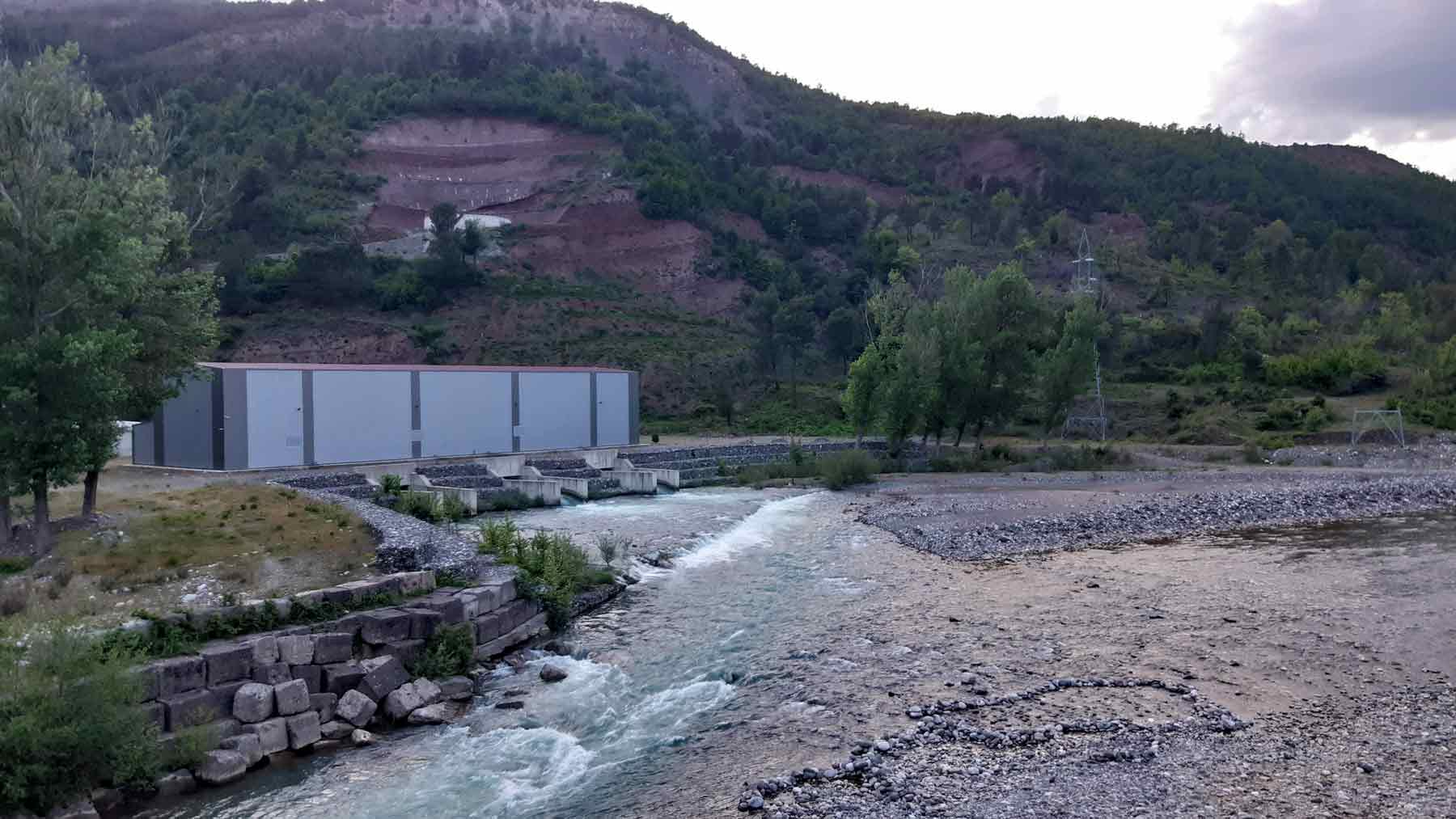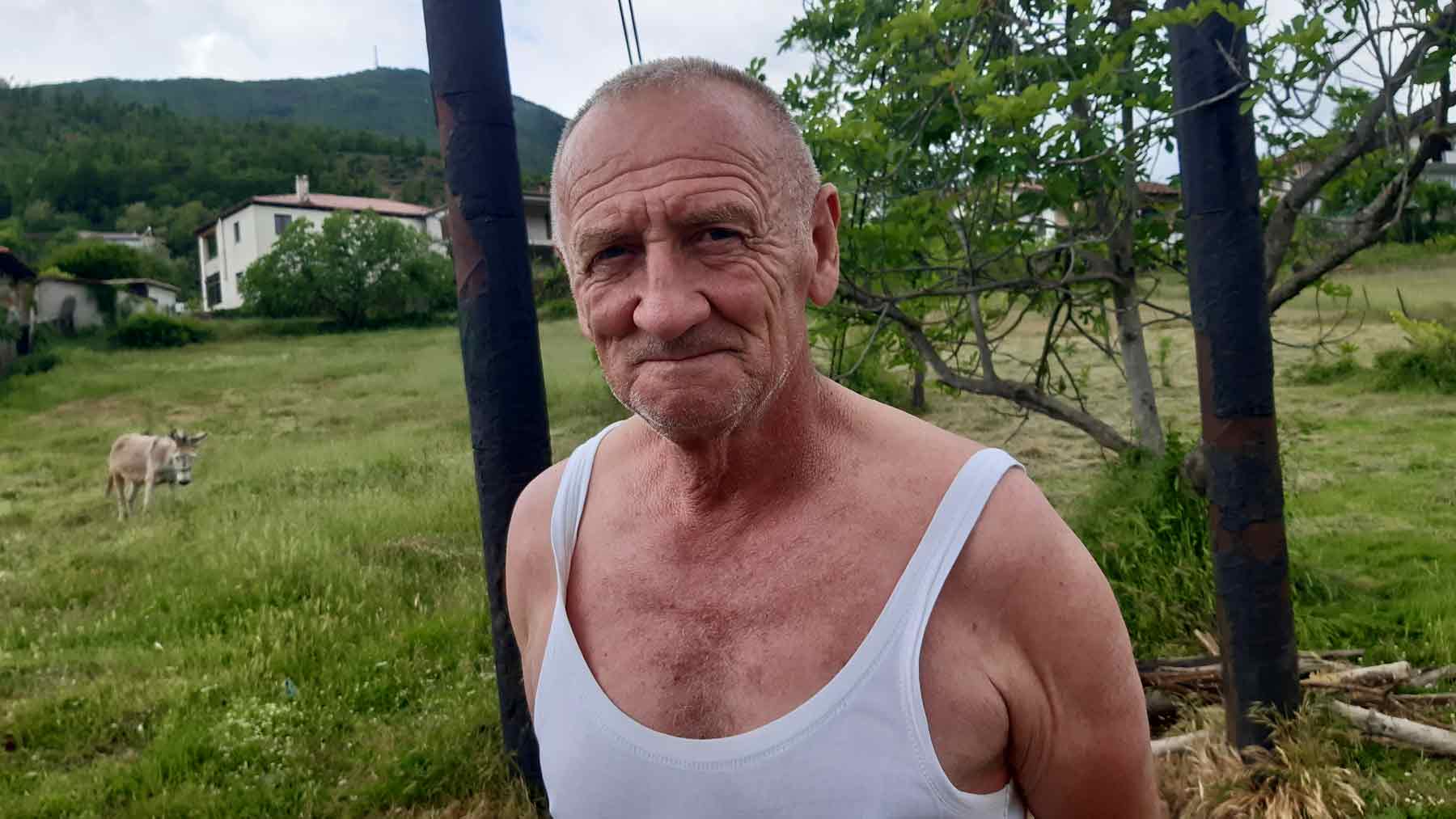Global climate change has had a deep impact on Albania, a neighbour of Greece, North Macedonia and Montenegro, as it has become hotter and hotter over the last few years. According to a report by the World Bank, the country is highly vulnerable to the effects of climate change, worsened by its infrastructure needs and poverty in rural areas.
Albania, a flat and low-lying country with hot and dry summers, is prone to natural hazards such as droughts, forest fires and landslides. Last summer, several rivers dried up, leaving multiple rural communities without access to running water.
To curb the effects of the climate crisis, local lawmakers have increasingly looked to hydropower in recent years. A relatively cheap technology, hydropower uses the natural flow of moving water to generate electricity and it has been embraced by Albanian officials to help the country reduce its greenhouse gas emissions from fossil fuels.
The government has signed no fewer than 130 contracts for the construction of hydropower plants in its Librazhd region over the last few years, with – according to the environmental office within the municipality of Librazhd – 45 projects already completed.
The European Union has played an indirect role in the rise of hydropower in Albania, an EU candidate country since 2014. Owned by 72 countries, as well as the EU and the European Investment Bank, the European Bank for Reconstruction and Development (EBRD) provides project financing for local banks, industries and businesses with the goal of supporting market economies. The multilateral development bank has supported 61 hydropower plants in southeast Europe to the tune of €126m since 2005, and eight hydropower projects in Albania specifically.
 The dam interrupts the flow of the river. Photo by Arlis Alikaj
The dam interrupts the flow of the river. Photo by Arlis Alikaj
But instead of addressing the country’s climate headaches, these EU-funded hydroplants have created novel challenges for Albania’s rural communities.
In Librazhd, a town in the eastern part of Albania that borders North Macedonia and is home to the Unesco-protected Shebenik Jabllanica National Park, four hydropower plants were operational in 2021, with five more under construction. According to both local authorities and residents, the construction of these plants along the Shkumbin River that runs through the area has caused significant soil erosion since 2016. Hydropower parks situated close to Shebenik-Jabllanica Park as well as Kuturman Park, a protected landscape, have also dried up a section of the river.
Water scarcity, meanwhile, has become a major year-round issue in the nearby village of Togëz, the site of the country’s first hydropower plant. Its construction has resulted in the destruction of irrigation canals, leaving fields that would have been planted with grain and cereal crops barren.
“They have taken away our water. They release it whenever they please and take it away whenever they want, all for the sake of the power plant. Now, we have to rely on the drinking water provided by the city,” Donika Murraci, a resident of Togëz, tells The Parliament.
They have taken away our water. They release it whenever they please and take it away whenever they want, all for the sake of the power plant
According to Murraci, the village never experienced any water shortages in the past. But everything changed with the arrival of the hydropower plants, which she says has led to a scarcity of drinking water, which has in turn caused hygiene issues.
Ermir Muça, another Togëz resident, gestures towards his desolate, stone-covered plot of land. “Nothing grows here. The land is dry and devoid of water,” he says. “It’s impossible to cultivate anything, not even alfalfa for our livestock. Growing corn or wheat is completely out of the question. It’s incredibly tough.”
The destruction of the irrigation canals has had deep consequences for the villagers’ livelihoods. “We have lost all the fertile land down in the fields. The government’s mistakes have pushed us into poverty,” says Fiqirete Çota, another local resident. “It’s been years since we worked the land. Our village has no future.”
Shyqyri Çota, with no relation to Fiqirete Çota, a local farmer, points to damage which he said was caused to residents’ houses during the tunnelling process that the construction of the plants necessitated. “While some received compensation for their houses, the majority of us were left uncompensated and had to repair our houses ourselves,” he tells The Parliament. Pointing out that water supplies have been unreliable every summer since, he says: “It’s a constant struggle and inadequate water distribution remains our biggest problem.”
 Farmer Shyqyri Çota working. Photo by Arlis Alikaj
Farmer Shyqyri Çota working. Photo by Arlis Alikaj
It wasn’t meant to be this way. Under Albanian law, project developers are required to consult affected communities before embarking on major construction projects in certain areas. EcoAlbania and the Environmental Centre, two local environmental NGOs, however, have said that local residents were either not adequately informed nor invited to participate in such meetings. In 2017, the country also adopted new legislation prohibiting the construction of hydropower projects in national parks.
Rrapun 1 and Rrapun 2, hydropower plants built on the local Qarrishte River, flow entirely through the Shebenik-Jabllanica National Park, a park whose rivers used to boast 14 fish species, five of which appear on the International Union for Conservation of Nature ‘red list’ of threatened species.
A concrete tunnel carries the water flows from the Rrapun 2 production plant to Rrapun 3 and Rrapun 4. Together, the dams which the construction of these hydroelectric power plants required, have completely dried up the section of the Qarrishte River that runs from the national park to the village of Librazhd.
“The construction of hydropower plants has had an irreversible impact on the destruction of [local] habitats. They are the only threats that permanently eradicate habitats,” says Dr Ermelinda Mahmutaj from the University of Tirana, the country’s largest university.
“Hydropower plants were constructed without adequate environmental studies, and they were built in protected areas,” says Ahmet Mehmeti, an environmental expert who leads the local Elbasan Ecological Club environmental group and advises the country’s federal prosecutors on conservation crimes as a consultant. “Often, they are owned by private interests and individuals with strong connections, who are profiting greatly from them.”
It’s been years since we worked the land. Our village has no future
Bankwatch and EcoAlbania have also observed that the Rrapun 3 and Rrapun 4 hydropower plants were built without a passage to allow fish to safely migrate through the dams. According to figures from the European Commission, one in five fish will die when passing through hydropower plants.
Reports from local NGOs such as Bankwatch also suggest that several small hydropower dams financed with loans from the European Bank for Reconstruction and Development have led to soil degradation and a sharp decline in local agricultural production. These NGOs say the hydropower dams were not constructed in accordance with EU rules.
The EBRD has acknowledged the adverse impacts of Albania’s hydropower plants on local communities and the environment. However, in a letter to Bankwatch, it observed that it “has no influence over the activities of Rrapun 3 and 4, and is not in a position to alter the already permitted water usage agreements between the authorities and the hydropower developers”.
Contacted by The Parliament, the Albania office of the EBRD says that both the bank and the European Investment Bank had adapted their lending policies in line with recommendations from the International Union for Conservation of Nature since the time when the eight hydropower plants were approved.
“The EBRD now requires high-risk projects, including hydropower plants, to undergo additional scrutiny by commercial banks,” a spokesperson says, adding that the bank also raised its environmental standards and accompanying compliance requirements for such projects.
The spokesperson adds that the EBRD also requires financial intermediaries to publicly disclose high-risk projects on their websites for transparency. Referring to the good governance policy the EBRD adopted in 2019, they add: “Under the new Environmental and Social Policy, financial intermediaries must refer high-risk sub-projects, like hydropower, to the EBRD’s in-house team for further examination. Project compliance now goes beyond national legislation to meet elevated environmental and social standards.”
In an interview with The Parliament, Leonard Alliu, an environmental activist with the Shkumbin River Protection Initiative in Librazhd, highlights a trend where local Albanian officials often abandon efforts to safeguard local rivers when energy companies promise to make million-euro investments in local projects.
The government has abandoned us, and everyone wants to leave
Many young people and students from the villages affected by water scarcity as a result of the hydroelectric projects want to leave and never return, but feel tied to their traditions and families, with limited alternative options for relocation, Alliu points out.
“The government has abandoned us, and everyone wants to leave,” says Alliu. He emphasises that tourism is the only hope left for the communities that have lost their traditional source of income – agricultural farming – as a result of the hydropower plants.
Ferit Mokra, an elderly resident of Togëz village, would like to see a future that combines the two. "It is disheartening for young people who have invested years in [agricultural] education to end up working as waiters,” he says. “If the rivers and nature are preserved, they can [return to farming and supplement] their livelihoods through tourism.”
Sign up to The Parliament's weekly newsletter
Every Friday our editorial team goes behind the headlines to offer insight and analysis on the key stories driving the EU agenda. Subscribe for free here.